#treatyrights
Explore tagged Tumblr posts
Text
#nomorestolensisters#treatyRights#alaskadailyabc#landback#EndlessNatureWalkandGiftShop#ezramillerarrested
0 notes
Text
0 notes
Text
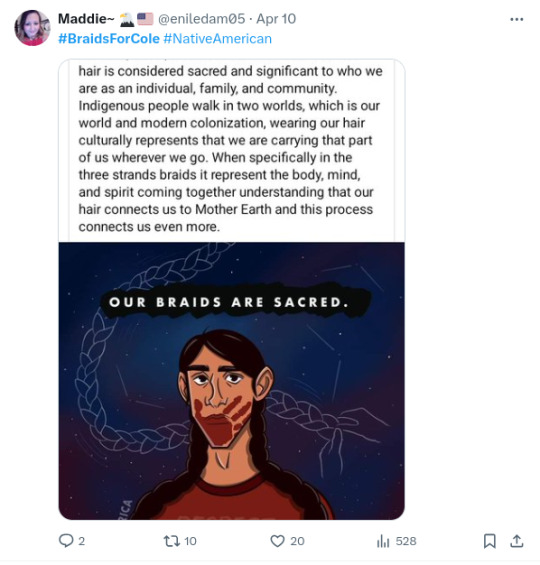
Cult data says #MMIP is a Native American religious practice --- #TreatyRights --- #Durangocide --- #ICWA -- #MMIW --
0 notes
Text
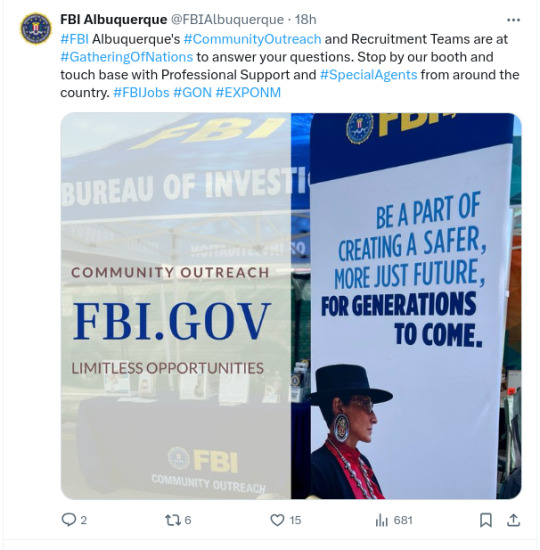
Cult data says cops won't do anything about #MMIP because it's a religious practice in another country --- #TreatyRights --- #Durangocide --- #ICWA --------
0 notes
Photo
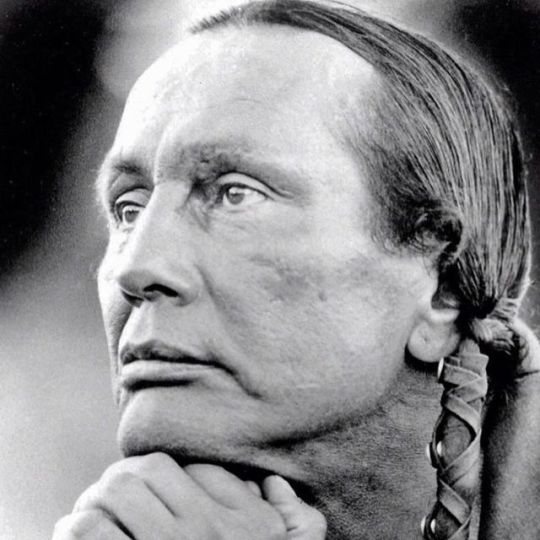
"I hope to be remembered as a fighter and as a patriot who never feared controversy and not just for Indians. When I fight for my people's rights, when I stand up for our treaties, when I protest government lies and illegal seizures and unlawful acts, I defend all Americans, even the bigoted and misguided." ~Russell Means, in "Where White Men Fear to Tread" RIP #russellmeans #iloveancestry #lakota #ancestors #roots #americanindianmovement #nativepride #activist #warrior #woundedknee #native #treaties #indigenous #firstnations #treatyrights #honorthetreaties https://www.instagram.com/p/B3AgOrzoshd/?igshid=55dlsborpv4
#russellmeans#iloveancestry#lakota#ancestors#roots#americanindianmovement#nativepride#activist#warrior#woundedknee#native#treaties#indigenous#firstnations#treatyrights#honorthetreaties
1 note
·
View note
Photo
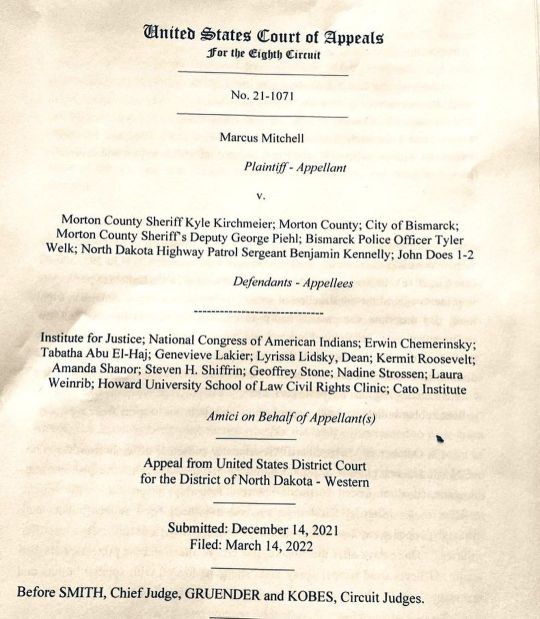
It’s hard to read through this without crying. Only once tho’ cause Grampa Joe Pretends Eagle would holler: “CHESHNIYO!” (Stop Crying/Don’t cry—I think) 😩😆😂 It looks like the court dismissed some claims but remanded on the 1983 claims. It will be interesting…to see how a federal court in North Dakota will address the very claims it tried to dismiss. 🤷🏽♀️🤷🏽♀️🤷🏽♀️ Wopíla to Albuquerque lawyer—Lorenzo Chacon (Rest In Power). He is the dad of our mašké Autumn Chacon, who came to Standing Rock to stand with our people. He also represented Marcus Mitchell. #nodapl #climatechange #indigenous #civilrights #treatyrights #humanrights #Lakota #mniwiconi #protectthesacred (at Standing Rock Indian Reservation) https://www.instagram.com/p/CbJK6XsLWGV/?utm_medium=tumblr
#nodapl#climatechange#indigenous#civilrights#treatyrights#humanrights#lakota#mniwiconi#protectthesacred
0 notes
Text
The Natural Wonder of Colchuck Lake
Colchuck Lake, that unreal turquoise pool of internet fame, owes its shape and shade to an earlier time.
Not as early as you might imagine.
When you’re standing on the smooth granite of the lakeshore, the natural tendency is for your mind’s eye to wander too far back in time. Mine does. I picture a massive sheet of ice that slowly carves a hanging valley out of the batholith from which it sprang. As the Pleistocene draws to a close, the glacier slowly climbs backwards, until it tucks itself into the steep slopes beneath the col. A brief hiccup in the Little Ice Age leaves a moraine above the western shore, and then it settles into its present and, by all indications, quite final retreat.
In its long, slow wake, the glacier leaves a basin for a lake, but that alone doesn’t explain what you’re looking at. Some of the credit has to go to something much less epochal: the dam-building binge of the 1930’s.
During the depths of the Dust Bowl and the Great Depression, we put nature to work. Dams sprouted like a pox across North America in the geological blink of an eye. The Tennessee Valley Authority was formed; the Columbia began to be tamed by the first phase of the Bonneville; and the Colorado was enchained behind the Hoover for something like good.
Give us electricity. Let us grow crops in the desert. Sustain our homes in the saguaro-dotted sands. It seemed like a foolproof plan at the time.
A similar bout of construction happened here, albeit on a more modest scale. In the late 1920’s and extending into the 30’s, masonry and earthen dams were thrown up in the seemingly untouched, subalpine wilds of the Icicle drainage to impound more meltwater in Colchuck, Eight Mile, Snow, Nada, Klonaqua and Square Lakes.
You’d never know to look at them that they were part of an irrigation system extending miles upvalley and down. Their levels were raised to ensure a steady flow of water during dry season and drought.
You can spot the signs of their real nature easily enough, if you care to. Far downstream, as you cross the deluxe pedestrian bridge that leads from the Snow Lakes parking lot to an unending serpentine climb, your eyes might spy an aqueduct paralleling the turgid waters of Icicle Creek. It is one of the more visible sections of 40 miles of canals that route water to farms in the valley below and to the Leavenworth National Fish Hatchery.
That hatchery, the largest in the world when it was constructed, was the byproduct of yet another adventure in irrigation and hydroelectricity: it was required as a remedy for the effects on fish of what was then the largest concrete structure ever built, the Grand Coulee Dam, one of many obstacles we placed in the way of salmon traveling upriver from the ocean to spawn.
However large that hatchery might be, the runs it produces can’t compare to what was here before those many diversions along the Columbia. Salmon spawned in great numbers in the waters of the Wenatchee River and Icicle Creek. That fishery was strong enough to sustain an entire peoples at the confluence of the two streams. They.called themselves the P’squosa.
By the time the US Government displaced them in the 1800’s to make way for the railroad that still snakes its way through the mountains nearby, they were easy to shunt aside. Their numbers had been greatly diminished by disease that followed the introduction of horses to the area. The powers that be simply disregarded a treaty signed with them in 1855 and lumped them in with the Colville and a few other tribes, moving them east and north and out of the way. Most of us don’t give them a second thought (really, any thought at all) as we make the turn from US2 and drive through their erstwhile homelands on our way to this or that trail somewhere up Icicle Creek Road.
Their lands would become the site for Leavenworth, when it was established at the end of the 19th century as a mining and logging town. It attracted farmers, too, who attempted to grow fruit trees in the valley (unsuccessfully at first, due to frost). Delivering water to that agricultural experiment was the original raison d’etre of the canals built in 1901, right before the town reached its apogee. In the early 1900’s, Leavenworth was even bigger than it is in its current faux-Bavarian incarnation: 5,500 people called it home then, versus the couple thousand permanent residents now (it might seem more populous on a summer weekend, when the town’s numbers are inflated by transient visitors turning lobster red in the baking sun).
Leavenworth’s fortunes would eventually fall, but nowhere near as far (nor with the same finality) as those of the people who first called this place home. All that seems to remain of them is a smattering of place names: Colchuck, Klonaqua, Wenatchee.
Don’t you believe it! The names aren’t right. “Wenatchi '' was the name that the Yakama knew the P’squosa by (synecdoche for the place they fished, Wenatshapam), and the US Government simply adopted the term from them. “Colchuck” sounds authentic enough, but it is not from the P’squosas’ Salish tongue, but Chinook jargon, an amalgam of Chinookan and other languages (including a heaping of French) that served as a trade language betwixt the tribes and between native peoples and fur trappers, traders, and the like who started showing up in the 1600’s.
Chinook jargon traveled from the coast, up the Columbia, into the interior. While the original Chinookan is all but extinct along its former range, the jargon survives, sustained in part by newcomers, including a certain topographer who bestowed the name “col chuck” word-for-word on the “cold waters” he found in a portion of the lands he mapped.
In the decade following the construction of the dams in the Icicle drainage, a different kind of new arrival took an interest in one of the area’s more ephemeral and quixotic resources: enter the peakbagger. It was during the 1930’s, 40’s and 50’s that ascents of the peaks surrounding Colchuck Lake were first recorded by the mountaineering types who assign credit for such things. “Let it be known that so-and-so was the first person to stand on such-and-such spot, which is higher than other such spots.”
Today, the hills are alive with the sound of “Worth it!” The lake’s primary function is the delivery of transitory self-gratification and temporary relief of FOMO for the thousands of people who follow in the settlers’ and summitteers’ footsteps to stake vain, itinerant claims of immortality in the form of selfies by the lakeshore (or sometimes in floaties they dragged up the trail). Trip reports and social posts are filled with the assessment that Colchuck “did not disappoint.” Colchuck is very protective of its Yelp reviews.
It is only possible for Colchuck to live up to its YOLO expectations by us ignoring everything that belies its status as a natural wonder. Conspicuously absent from all the online commentary are the things that abet our modern-day conquests, like the ribbon of asphalt that brings us to within a few miles of the lake. The parking lot is worthy of note only as an annoyance - because it’s full - as if this were an aberration and not an integral part of the experience. The pit toilet gets a callout for not being clean enough, which is odd: the river of waste flowing from thousands of modern humans landing on a small, dusty patch of space cleared from a forest should elicit precisely zero shock.
Not mentioned at all are the dams or the P’squosa, who were here thousands of years before the purported first ascents or Instagram. This is likely the first you’re hearing of them. Surprise is the wrong word - they are hiding in plain sight, expunged through willful ignorance. By not asking the questions we don’t want to know the answers to, we repeat the role of the soldiers who paved our way. We sweep the P’squosa out of our collective memories to sustain the illusion we are taming a pristine wilderness, as if the last 200 years never happened.
If you would like to understand more about the tribe’s views on the promises made to them, please visit this documentary produced by the Confederated Colville Tribes. If you would like to read about the P’squosa in the words of their descendant, please visit P’Squosa Tribe by Mary Big Bull-Lewis.
1 note
·
View note
Photo
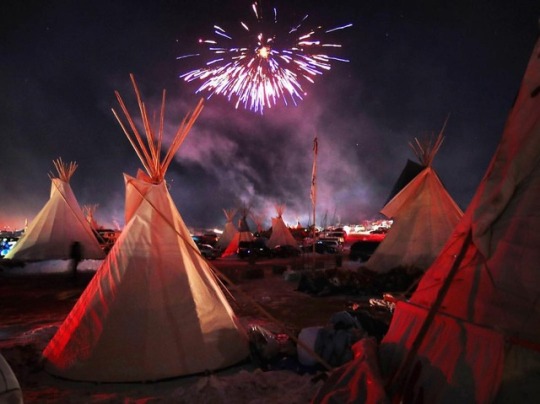
Remember the night we won. Remember how we won. Remember we won fair and square. Remember the only reason this changed was due to the freak election of the most corrupt president this country has ever known. Remember he happens to have a personal stake in the pipeline. Remember this decision was illegal. Remember we have yet to have our day in court. Remember the battle is not over. Remember there will be many more battles. Remember to stay strong. Remember to celebrate our victories. Remember Oceti Sakowin. #MNIWICONI #nodapl #standwithStandingRock #standingrock #ocetisakowin #ocetisakowincamp #nativeamerica #treatyrights #protectthesacred #mniwiconi #water #waterislife #prayers #pray #peace #resist #divest #divestdapl #writing #spilledink #victories #fireworks #remember (at Oceti Sakowin Camp)
#ocetisakowin#pray#divest#remember#protectthesacred#victories#water#treatyrights#fireworks#mniwiconi#spilledink#writing#divestdapl#nodapl#standingrock#nativeamerica#waterislife#standwithstandingrock#prayers#resist#peace#ocetisakowincamp
4 notes
·
View notes
Text
N.S. Mi’kmaq lobster pound destroyed by fire
A large fire completely destroyed a commercial building, reported to be a Mi’kmaq lobster pound, in Middle West Pubnico, N.S. early Saturday morning.
Jonathan LeBlanc, fire chief for Eel Brook & District Fire Department says his his department was one of eight that received a call to assist the West Pubnico fire department shortly after midnight on October 17.
Twitter user Pierrette dEntremont posted a video of the blaze early Saturday morning.
This has gone TOO far. Fire crackling woke us up. Middle West Pubnico tonight #MikMaq #TreatyRights pic.twitter.com/62M6l5B8o3
— Pierrette dEntremont (@PAdEntremont) October 17, 2020
LeBlanc says that upon arrival the building was fully involved, and crews were unable to approach it due to power lines.
Crews focused on protecting exposures to adjacent buildings while the building was destroyed.
LeBlanc estimates that 80 to 120 firefighters from eight area fire departments were at the scene overnight. He says that after several hours, crews were able to contain the fire around 4:30 a.m.
LeBlanc says there were no injuries at the scene.
There is no idea of the fire’s cause at this point, and LeBlanc says it will be difficult to determine as the building was fully involved when crews arrived. The fire marshal has been called to investigate.
While LeBlanc wasn’t able to confirm the use of the building, a media representative for Sipekne'katik First Nation confirmed to CTV Atlantic that the building was the same lobster pound where two employees had barricaded themselves in on Tuesday.
RCMP confirmed in a news release that about 200 people were present at two incidents Tuesday night outside lobster pounds in southwestern Nova Scotia, during which employees were prevented from leaving, rocks were thrown and a vehicle was set on fire.
Jason Marr, a fisher from Sipekne'katik, said he and another Indigenous lobster fisherman were trapped inside the Middle West Pubnico facility after he arrived to store his lobster.
"Somebody followed me to the place in Pubnico, and I wasn't there for three minutes before 200 guys showed up," Marr said in a telephone interview on Wednesday.
He said the non-Indigenous "mob" threw stones at the facility, broke windows and damaged his van, burning its interior. Marr said that when RCMP arrived, they wanted him to leave the building, but he declined and remained barricaded inside.
"They said, `If you don't come out we're going burn you out,' " he said of he crowd outside. "I watched them pour stuff in my gas tank and my van, slash the tires, cut wires, they pissed all inside of it."
This is a developing story. Updates to follow.
from CTV News - Atlantic https://ift.tt/31hkniz
3 notes
·
View notes
Photo

Here's what you think you know about First Nations people but really, you don't know how mistreated we really are. #strongfirstnationpeople #firstnationscanada #indigenouspeoples #firstnations #canadianeducation #geteducated #treatyrights #europeans (at Sagkeeng First Nation) https://www.instagram.com/p/Bnf4IYtg4bUX4YxBgZ8-MYLpWssGtnKTa7mcpc0/?utm_source=ig_tumblr_share&igshid=160man649ed3n
#strongfirstnationpeople#firstnationscanada#indigenouspeoples#firstnations#canadianeducation#geteducated#treatyrights#europeans
0 notes
Photo
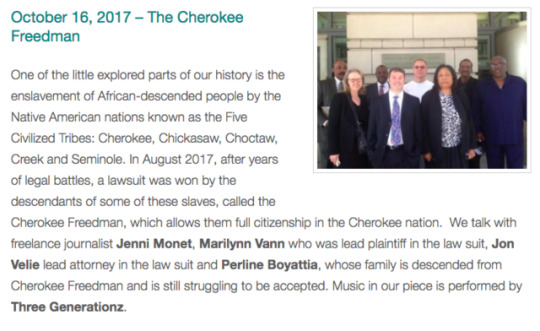
Oct. 16, 2017
The Marc Steiner Show
The Fight For Representation: The Cherokee Freedman
0 notes
Photo

ACTION NEEDED. YES! An Environmental Impact Statement will be required in regards to the Dakota Access Pipeline crossing Lake Oahe. This is great. However, your comments are needed to help determine exactly what should be considered in the EIS. Head to the website StandwithStandingRock.net {Link in bio} or @standingrock Instagram account to learn more about how the SRST thinks the EIS should be expanded to include impacts to the Great Sioux Nation as well as fully consider tribal rights. #noDAPL #standwithstandingrock #tribalsovereignty #treatyrights #protectthesacred
0 notes
Photo
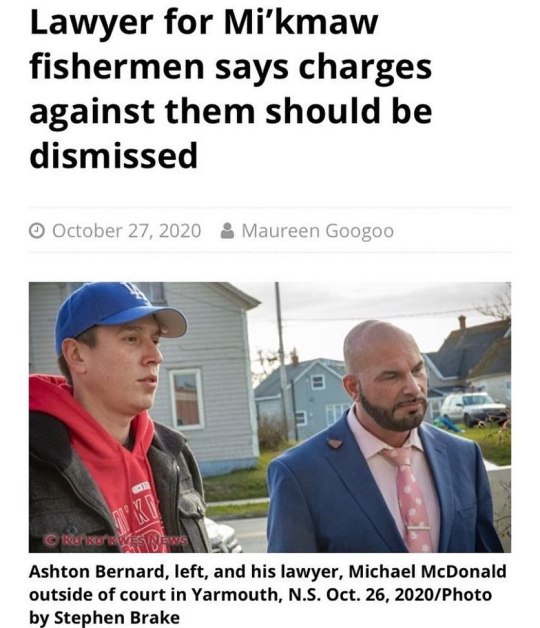
“The lawyer representing four Mi’kmaw lobster fishermen in Nova Scotia says all fishery charges against them should be dismissed.⠀ ⠀ “We have four Mi’kmaw fishermen that were fishing under their right to (fish for) a moderate livelihood,” Michael McDonald said following court in Yarmouth, N.S. Monday morning.⠀ ⠀ “There’s no regulations in place against moderate livelihood fishing. There’s no limitations put on livelihood fishing. So, we’re just wasting everybody’s time,” he said.⠀ ⠀ McDonald represents brothers Ashton and Arden Bernard from Eskasoni First Nation as well as Zachary Nicholas and Rayen Francis from Pictou Landing First Nation.⠀ ⠀ All four fishermen are each charged with fishing in Lobster Fishing Area (LFA) 34 during a closed time, lobster fishing without authorization, possessing lobster in contravention of the Fisheries Act and violating the Aboriginal communal fishing licences regulations.” ⠀- @mgoogoo Tap on @kukukwes_news link in their bio to read the full news story.⠀ ⠀ #kukukwesnews, #indigenousnews, #indigenous, #mikmaq, #treatyrights, #indigenousrights, #novascotia, #lobsterfishing (at Okanagan Landing) https://www.instagram.com/p/CG3WmJmJOzQ/?igshid=1i6vxdwymffuo
#kukukwesnews#indigenousnews#indigenous#mikmaq#treatyrights#indigenousrights#novascotia#lobsterfishing
1 note
·
View note
Photo
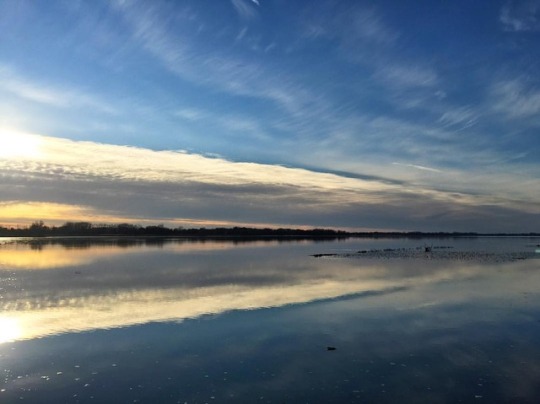
Today the brave souls who have committed their lives to protecting these beautiful waters will be forcibly removed and arrested if they do not vacate the Oceti Sakowin Camp by 2pm. So once again indigenous people are being evicted from their own land in America. Understand that this is treaty land, so under the constitution this action is illegal. Pray for them 🙏🏽 Pray for the water 🙏🏽 Pray for the future health of your children 🙏🏽 Because what happens today will affect us all in the long run. MNI WICONI! #nodapl #standwithStandingRock #standingrock #ocetisakowin #ocetisakowincamp #nativeamerica #treatyrights #protectthesacred #mniwiconi #water #waterislife #prayers #pray #peace #resist #divest (at Oceti Sakowin Camp)
#standingrock#divest#pray#ocetisakowincamp#mniwiconi#peace#waterislife#resist#standwithstandingrock#nativeamerica#nodapl#ocetisakowin#treatyrights#prayers#protectthesacred#water
0 notes
Photo
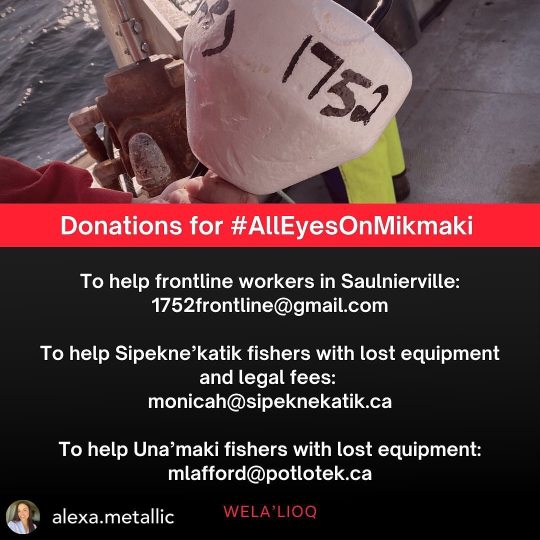
@alexa.metallic “In response to the inquiries I’ve been getting about where to donate for #AllEyesOnMikmaki, here’s an updated list. You know I love me a good infographic. Wela’lin.” #alleyesonmikmaki #mikmaq #novascotia #donations #supportindigenouspeople #unamaki #sipeknekatik #saulnierville #supporttreatyrights #treatyrights #undrip #indigenoussovereignty (at Okanagan Landing) https://www.instagram.com/p/CGvpdtJp-U-/?igshid=zd63m7vc64w1
#alleyesonmikmaki#mikmaq#novascotia#donations#supportindigenouspeople#unamaki#sipeknekatik#saulnierville#supporttreatyrights#treatyrights#undrip#indigenoussovereignty
1 note
·
View note